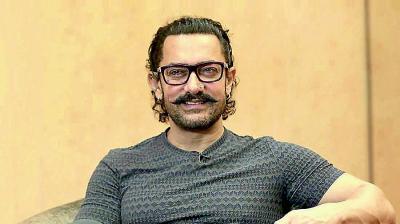A feminist statement
Trisha Das, who is known for her feminist writing style, talks about her latest book Kama’s Last Sutra that is rich in history, sexuality and romance.
Trisha Das begins the book Kama’s Last Sutra with a unique dedication. “For Deeps, who is neither the breath in my lungs nor the wind beneath my wings and does not complete me. Here’s to a pair of independently-breathing, fully-complete, wingless mortals who choose each other. Every day. Always,” it reads. As one turns the pages, the story of Tara Singh, an archaeology student, begins to unravel. Soon, the reader is transported to 1022 CE along with Tara, where a different world awaits her and the reader.
Tara is independent, romantic and brave enough to call a spade a spade. She doesn’t even mind questioning the myths about pretty women conceiving from God. One of the key features of Kama’s Last Sutra, a feminist and historic book, is this bold narrative. “Most stories in Hindu culture have been passed down by word of mouth and are heavily steeped in religion and magic because they were used by priests and leaders to teach, entertain and control largely illiterate populations for thousands of years. We are illiterate no more and so we’ve begun to question the beliefs our ancestors always accepted as the gospel. Especially women — we have an even greater need to question,” says the author about her style of writing.
Her previous book Ms Draupadi Kuru: After the Pandavas too follows the same approach. The book is about Draupadi, who is bored of heaven and sets out on a journey to New Delhi with her women gang comprising Amba, Kunti and Gandhari. They have been allowed to spend 30 days on earth. The book explores what the gang does during the period. She explores their journey in a fun yet meaningful way in the book. In Kama’s Last Sutra, Trisha raises certain questions through the lead character Tara. It also explores sexuality from a female perspective. “The title Kama’s Last Sutra refers to the erotic carvings on the walls of the Khajuraho Temples. They’re commonly referred to as the Kamasutra carvings, even by local tour guides who bring hordes of foreigners to see them, because they’re so explicit.” However, in the novel, unlike the local tourist guides, Tara has a different and sensible take on the erotic sculptures that adorn the walls of temples in Khajuraho. At certain points, Tara even corrects local tourist guides who dole out the distorted information that have been passed on to them.
Quiz Trisha whether she was apprehensive about the audience and she says, “One is always apprehensive about audience response. But I think we’re living in a time when people are ready to talk about some of the issues I’ve raised in the book. Female sexual dialogue in India, for instance, has always been viewed from a male perspective and we’re finally ready to change that,” says Trisha, who has set the novel in a historic background.
 Kama’s Last Sutra by Trisha Das Rs 299, pp 302 Harper Collins India
Kama’s Last Sutra by Trisha Das Rs 299, pp 302 Harper Collins India
It took her around six months to develop the setting of the medieval time of Kama’s Last Sutra, she says. And, it has been a challenging journey. “It’s a difficult period to research because these weren’t societies that kept records diligently. They were too busy fighting. Whatever they did record, was either destroyed or fell into disrepair. But it’s a very interesting period in our history and I feel it’s underrepresented in novels,” says Trisha, an admirer of time-travel genre.
Be it the Kama’s Last Sutra or Ms Draupadi Kuru: After the Pandavas, she has used the genre to convey her thoughts. “I do have a fascination for time travel. I spent most of my childhood daydreaming about travelling to different places and times. It’s my escape from real life and that’s what I hope it’ll be for my reader too. I love time-travel historical romances, especially the Outlander series by Diana Gabaldon,” says the author.
She makes no bones about the fact that she writes the kind of books she likes to read. “Mythology, history, anthropology, sociology and religion are my specific interests. I read both fiction and non-fiction across genres as long as it’s well-written and entertaining. Unfortunately, these days I read mostly research material because of my writing, but I do treat myself every few weeks.”
She also has to her credits the books The Art of the Television Interview and the internationally acclaimed How to write a Documentary Script. A filmmaker, she has written and directed over 40 documentaries and has won an Indian National Film award in 2005. She has been UGA’s International Artist of the year in 2003. Her films have been screened in various international channels and festivals.
Trisha says, to become a writer had been her dream since childhood, but she could find the confidence to do that when she turned 21. “My computer crashed when I was halfway through a novel, so I gave up and fell into a filmmaking career. I restarted writing in my thirties,” says the author. But, she doesn’t regret that gap. She feels her filmmaking career has made her more organised and efficient. “It has also made me a more effective editor of my work. I’m able to think better visually and in terms of incorporating action into the plot to move it forward.”
And, she keeps writing. Currently, she is writing her next novel The Misters Kuru: Return to Mahabharata, which is the sequel to Ms Draupadi Kuru. “It features the Pandavas coming down to Delhi from heaven and it’s funny and full of action with a few unexpected twists. It’ll be published by HarperCollins India by 2019 end,” she signs off.


















